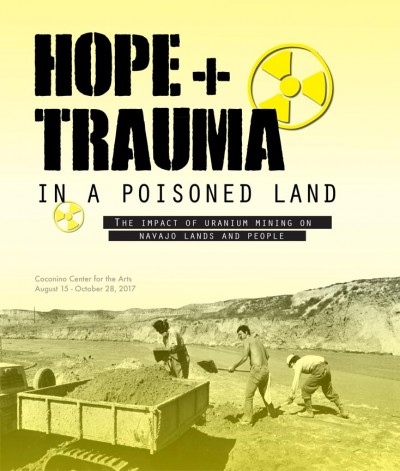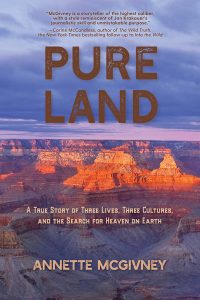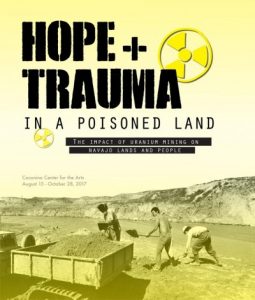By Heidi Toth
NAU Communications
Northern Arizona University faculty members were honored at the Flagstaff Arts Council’s annual Viola Awards Ceremony this weekend for telling stories that had never been told before.
Annette McGivney, a principal lecturer of journalism in the School of Communication, won the Viola for excellence in storytelling for her book “Pure Land,” which is part true crime, part memoir.
Her book, which was released last fall after a decade of working on it, tells the story of a young Japanese tourist who was traveling solo through the United States when she was brutally murdered in the Grand Canyon by a young Native American man. As McGivney worked on this project, she found herself confronting demons from her life, picking through the memories of her father beating her almost daily when she was growing up. She talked to NAU News about her experience writing “Pure Land” for the National Day of Writing on Oct. 20.
The book has been well-received thus far, McGivney said, and winning a Viola Award, evidence of the Flagstaff community’s support for her work, was “icing on the cake.”
“I have done events across the country and am especially touched by the people who tell me how the book affected them emotionally because they also experienced childhood trauma,” she said. “I also am so happy about how the murder victim, Tomomi Hanamure, is now put on a pedestal by readers for the courageous way she approached life.”
Learn more about The Healing Lands Project, a nonprofit McGivney started in conjunction with NAU’s Family Violence Institute and Grand Canyon Youth, to help people heal from trauma through a connection with nature.
The other NAU winner, in the category for innovation, was a unique collaboration of dozens of students, professors and artists from throughout northern Arizona. Ann Futterman Collier, chair of the Department of Psychological Sciences, conceived of the idea for “Hope and Trauma in a Poisoned Land,” a social practice art exhibition, through her research with master’s student Davona Blackhorse and discussions with local artist Shawn Skabelund. The exhibit highlights the experiences of Navajo Nation residents who have been exposed to the deleterious effects of uranium mining on their water, air, health and families.
The art installation, which was on display last fall at the Coconino Center for the Arts and later at the Martin-Springer Institute on NAU’s campus, included sculptures, paintings, photos, poetry, performances and educational outreach, all sharing stories from Navajo people about their experiences with the effects of radiation, even long after mining had stopped.
“The initial purpose was to give voices to the stories of indigenous people living in uranium-contaminated regions of the Navajo Nation,” Collier said. “The narratives created through art in this exhibition provided cohesive, compelling and healing stories for both our artists and patrons alike.”
She collaborated with Skabelund, a regional artist and curator and a faculty member in sustainable communities, Blackhorse and Travis Iurato, with help from John T. Tannous, executive director of the Flagstaff Arts Council, Peter Friederici, associate professor in the School of Communication, and the Cameron chapter of the Navajo Nation. Collier said the chapter house president in Cameron told her this was the first time anyone outside the Navajo Nation had tried to do something that mattered to their community.
Contributing artists included Debra Edgerton, a senior lecturer in the School of Art; Mark Neumann, professor of creative media and film; and Collier herself, who received the Innovative Design Scholarship Award from the International Textile and Apparel Association for her piece, “Irradiated Traditions: Navajo People Wearing the Yellow Dust of Uranium Toxicity.”
Several NAU professors also contributed to the program’s educational outreach, including Jani Ingram, associate professor of chemistry and biochemistry and director of the Partnership for Native American Cancer Prevention; Catherine Propper, professor of biological sciences; and Evie Garcia, an associate professor of educational psychology. Alumnus Tommy Rock, who conducted his dissertation research on the effects of uranium mining in Cameron, also participated, as did a number of current students.





